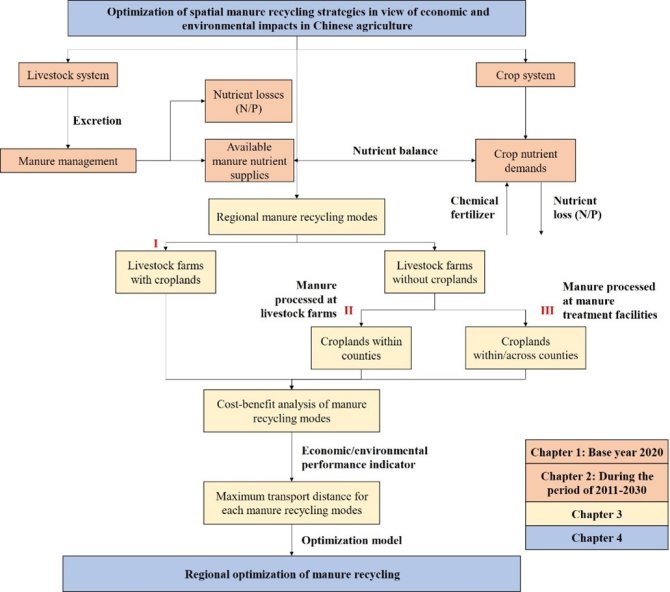
Project
Optimization of spatial manure recycling strategies in view of economic and environmental impacts in Chinese agriculture
The average manure-recycling ratio China is lower than 40% in, implying that over half of the nutrients in manure are lost to the environment, leading to great pressures on environmental quality. Recoupling crop and livestock production has a big potential to mitigate environmental pollution. The aim of this study is to evaluate the environmental and economic costs and benefits of various spatial manure recycling strategies with the aim to optimize manure recycling in China.
Introduction
Since 2000, China’s crop and livestock sector has entered a phase of rapid development. Due to the rapid growth of the crop and livestock industry, China consumes about one-third of global nitrogen (N) fertilizer and 21% of global phosphorus (P) fertilizer. The overuse of chemical fertilizers, combined with inappropriate manure management, has led to great environmental problems, such as eutrophication and soil acidification. Currently, the average manure-recycling ratio is approximately 40% in China, implying that 60% of the manure nutrients are lost to the environment. Replacing mineral N and P fertilizer inputs by manure would reduce soil acidification, since manure contains significant amount of base cation nutrients, such as potassium (K), calcium (Ca) and magnesium (Mg). Recoupling livestock and cropland on a regional scale could thus both reduce manure N and P losses in the entire food chain and soil acidification rates compared to the decoupled crop and livestock system. Hence, appropriate policies and regulations, strengthening the link between livestock and crop farmers, can greatly mitigate agriculture induced decline in soil, air and water quality.
Objectives
The main research challenge in this project is to build a manure allocation model to evaluate and optimize spatially specific manure recycling and manure allocation strategies in view of environmental and economic cost and benefits. The project comprises three sub-objectives: 1) quantify the spatial variability in regional nutrient balances, 2) quantify the impacts of changes in livestock numbers, crop structure and manure treatment technologies on those regional nutrient balances and 3) assess the costs and benefits of coupled crop-livestock production and quantify the optimal transport distance for different manure recycling strategies.
Methods
The methods in this project involve material flow analysis to quantify the nutrient balances and nutrient losses through manure management chains, questionnaire surveys on current manure use and willingness to accept manure for different crop types, a model approach to optimize the regional manure allocation strategies as shown in the attached framework and a cost-benefit analysis to quantify the costs and benefits of different manure recycling strategies.

(Expected) results
- quantifying the spatial variability in crop nutrient demands and manure nutrient supplies under current crop production (base year 2020)
- assessing the spatial manure nutrient supply and nutrient losses in response to changes in livestock numbers, manure recycling rates manure treatment technologies over the period 2011-2030,
- quantifying the environmental impacts and economic costs and benefits of different manure recycling strategies in terms of crop and livestock farmers’ income and losses of nitrogen (N), phosphorous (P) to air and water
- developing a regional optimization model to optimize manure allocation strategies